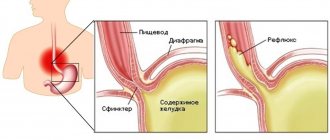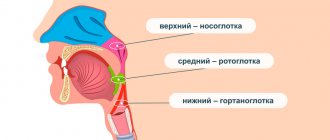Black hairy tongue syndrome is an unexpected and even frightening term. Such a strange name is not always clear to others. AiF.ru asked experts what this syndrome is.
“A hairy tongue is a manifestation of systemic diseases in the oral cavity. The name itself is associative. Of course, the tongue is not covered with hair. In fact, these thread-like papillae on the surface of the tongue acquire a tint that makes them look like hairs,” says dentist, chief physician of the dental clinic Ilya Antonov .
He notes that in addition to external changes, other symptoms may appear. Among them, the specialist names:
- foreign body sensation;
- the appearance of a feeling of dryness;
- slight burning sensation (not always).
Article on the topic
Summer misfortune. Why do ENT diseases occur in the warm season?
Symptoms that something is wrong with your throat
The feeling of a lump in the throat may be accompanied by a “soreness” in the throat, a feeling of incomplete inhalation, difficulty swallowing, discomfort in the neck and chest, a burning sensation or a sensation of a foreign body, although there are no changes when palpated (nothing is enlarged, not deformed, not inflamed).
A “lump” that appears once should not cause concern, since it is most likely a one-time reaction of the body to stress, overwork, or excitement of the nervous system.
If this phenomenon recurs, you should consult a doctor, as this feeling can become a painful symptom, “overgrown” with other manifestations: a feeling of a foreign body in the oropharynx, sleep disturbances, anxiety, loss of appetite and disruption of normal swallowing, surges in blood pressure and sensations of heart failure , diarrhea or constipation.
As a rule, timely and adequate treatment completely eliminates the unpleasant symptom.
Why does it appear?
Naturally, many are interested in why this pathology manifests itself and who is more susceptible to it than others. “Hairy tongue can appear in both adults and children. In children and adolescents, it most often occurs while taking certain medications. Among adults, this problem is more common among those who smoke and abuse alcohol,” says Ilya Antonov.
The dentist identifies three main reasons for the development of this syndrome:
- Infectious diseases.
- Hypovitaminosis.
- Diseases of the gastrointestinal tract.
As noted by an otorhinolaryngologist of the highest qualification category, Ph.D. Vladimir Zaitsev , when they talk about the connection between the appearance of a hairy tongue and the gastrointestinal tract, they often mean not so much intestinal diseases as stomach diseases. For example, such a picture can occur with gastritis, notes ENT. A stomach ulcer can also have its own specific effects on the tongue, especially if we are talking about its perforated version.
Vladimir Zaitsev also says that a problem may arise for those who abuse excessive “care” for their oral cavity and nasopharynx, if a person begins to overuse drugs for therapy. “Antibiotics can have an effect this way. This problem can also develop in patients who uncontrollably take medications as part of self-medication, when a person rinses and dissolves something for a long time, it does not help him, but he continues further. An overdose and an increase in the concentration of such drugs can cause an unexpected local reaction in the tongue. In this way, drugs that have color (color), for example, iodine-containing, oil and alcohol solutions on herbs for gargling, can have an effect,” says Vladimir Zaitsev.
In addition, among the reasons for the development of such a problem, the ENT cites allergies, intolerance to certain drinks and certain foods. The tongue becomes an indicator that the body is reacting negatively to some factors. “For example, excessive love for sugar, yeast products in large quantities - the same kvass, beer, yeast dough can cause a change in the appearance of the tongue,” says Vladimir Zaitsev.
Is my tongue my doctor? What diseases can be learned from the taste organ? Read more
Causes of an unpleasant lump in the throat
- Overwork.
- Severe or long-term stress. Nervous tension.
- Neuroses and neurotic reactions.
- Depression.
- Anxiety disorder (phobias, panic attacks, generalized anxiety disorder, etc.)
- Psychosomatic diseases.
- Schizotypal disorder, schizophrenia.
- Consequences of organic damage to the nervous system after trauma. infections, strokes, heart attacks, etc.
- Diseases of internal organs (hyperthyroidism, thyroiditis, tonsillitis, spinal osteochondrosis, hiatal hernia, obesity or cachexia).
- Allergic reactions.
- Poisoning.
What causes pathology to develop?
The appearance of hair on the surface of the tongue is always a consequence of some phenomena and processes occurring in the patient’s body. In fact, this is a symptom that acts as a complication against the background of a certain pathological disorder in the functioning of internal organs and systems. Most often, the cause of “hairy” tongue is one of the following factors:
- fungal infection, such as stomatitis,
- disruptions in metabolic processes,
- problems in the digestive system,
- long-term use of a particular group of medications,
- imbalance of oral microflora.
This is what a fungal infection on the tongue looks like
“I also encountered the same problem at one time. Thank God, I noticed it at the initial stage, when the tongue was just beginning to become covered with something like stubble. I was, of course, stunned. I immediately went to my dentist, he cleaned me, healed caries in one tooth, and prescribed applications to the tongue. Judging by the tests, the whole problem is due to the course of antibiotics that I took shortly before. Now everything seems to have passed, but I was in a very early stage, I don’t know if this can be treated in advanced cases...”
Kir!85, Ekaterinburg, from correspondence on the forum www.32top.ru
A “hairy” tongue is a phenomenon that requires a professional approach to treatment. Therefore, you should not make independent attempts to cleanse the organ, since in this case the situation can only get worse. It’s better not to take risks and entrust the solution to the problem to professionals.
Who to contact if you have a lump in your throat
The feeling of a lump in the throat is treated by a psychotherapist or psychiatrist. During the consultation, the doctor will assess the condition and determine the amount of assistance needed.
Help can be obtained in any clinic where there is a license to provide assistance in psychotherapy, psychiatry and neurology and where a psychiatrist or psychotherapist conducts an appointment.
ROSA Clinic
is a specialized and licensed clinic that provides assistance for all types of disorders accompanied by a feeling of a lump in the throat.
Our specialists
are ready to come to your home for consultation; you can also see a doctor in our clinic.
Treatment is most often carried out at home. If necessary, it is possible to be hospitalized in our own hospital, equipped with modern diagnostic equipment and where it is possible to carry out active treatment.
How to treat pathology
Since the appearance of dark hair-like growths on the tongue is not a full-fledged independent disease, the help of a therapist or gastroenterologist may well be needed to treat the root cause of this symptom. As for symptomatic therapy, the patient can be offered tissue restoration using the following methods:
- application therapy: applications soaked in a keratolytic agent are applied to the darkened area - it has a mild effect on dead cells and stimulates metabolic processes in tissues. This method is good because its use does not damage the mucous membrane, but at the same time it gives only a short-term effect,
- injection: the patient is given an injection of 2% novocaine and calcium chloride directly into the source of the lesion. The procedure is usually carried out twice a week. This method is considered less traumatic and the most effective,
One of the treatment methods is injection - cryodestruction: in this case, the keratinized areas are irrigated with liquid nitrogen, which leads to the gradual death of the deformed papillae. This procedure makes it possible to quickly get rid of the defect, but it is not carried out in all clinics.
As part of the treatment, the patient is also prescribed medications. Otherwise, the main emphasis is on eliminating the original source of the problem, which is dealt with by highly specialized specialists.
How is the feeling of a lump in the throat treated?
Treatment is determined by the causes and mechanism of development of the disease and is selected individually for each patient.
For a recent and non-severe condition
treatment is carried out on an outpatient basis: the doctor conducts a psychotherapeutic session, prescribes medications that the patient takes at home and periodically comes for follow-up consultations.
For moderate severity
- treatment in a day hospital is recommended: daily treatment procedures are carried out (drug infusions, physiotherapy, etc.), which take an hour and a half, but the patient lives at home and goes about his usual business. The average course of a day hospital is about 10 days.
In severe condition
hospitalization in a hospital is recommended. Due to intensive treatment, the condition can be stabilized already in the first hours of stay. The average length of hospital stay is 10 days (from 5 to 30 days depending on the severity of the condition and the body’s recovery abilities).
Main methods of treatment:
- Psychotherapy.
- Drug treatment (pharmacotherapy).
- Physiotherapy.
- Massage and manual therapy.
- Diet therapy.
- Biofeedback therapy.
Can hair grow on the tongue?
For your information! It goes without saying that nature does not provide for the presence of hairs on the tongue.
A rather rare disease of the oral cavity is glossophytia , in which the receptors of the tongue lengthen and become keratinized and blackened.
As a result, we can say that the tongue has become “hairy” and the feelings in the mouth are exactly like that.
This happens due to lack of hygiene, poor diet and excessive smoking..
Although the deformation of the receptors is in no way associated with the growth of hair on the tongue, however, this does not relieve the unfortunate patients from painful and unpleasant symptoms.
Preventive measures
To minimize the likelihood of coming face to face with such an unpleasant problem, it is important to ensure competent and high-quality prevention. To do this, experts in the field of hygiene and dentistry strongly recommend adhering to the following rules:
- daily brushing of the tongue: twice a day you need to brush not only your teeth, but also your tongue, because no less bacteria accumulate on it than on the surface of the enamel. To do this, you can use the rear ribbed surface of the brush, if it has one, or, for example, purchase a special device in the form of a tongue scraper,
Cleaning your tongue daily will help avoid the problem. - use of rinses: an excellent option can be a pharmaceutical product that not only fights bacteria, but also helps reduce inflammatory processes, helps remove food debris not only from the surface of the organ, but also under the tongue,
- systematic visits to the dentist: it is advisable to undergo preventive examinations at least once every six months. Regular visits to the dentist’s office will allow you to quickly detect the problem in its very beginning, and therefore quickly eliminate it,
- floss and irrigator: to maintain general oral hygiene, do not forget about such important devices as dental floss and irrigator - a portable device that removes plaque and dental deposits through a jet of water and air supplied under high pressure.
Any dental problem can be solved if you respond in time to suspicious changes in the condition of the teeth and oral cavity. The appearance of any neoplasms on the mucous membrane, the occurrence of pain and the formation of plaque on the tongue - all this is a serious cause for concern and an obvious signal that you need to see a doctor.
- Borovsky E.V. Therapeutic dentistry, 2003.
Language structure
To understand what is happening and why the papillae of the tongue hypertrophy, let us consider its structure. It is a muscular organ that is covered with a mucous membrane. The body of the tongue is covered with papillae of four types:
- leaf-shaped, they are located on the lateral surface of the tongue and contain taste buds and glands that produce a secretion resembling viscous saliva;
- grooved, they are located at the root of the tongue, the largest and fewest papillae of the tongue, contain taste buds;
- mushroom-shaped, they are randomly located over the entire surface of the tongue, also containing taste buds;
- thread-like, the most numerous, located on the back of the tongue, their function is to retain food and touch, they do not contain taste buds.
Thus, the anatomy of the tongue lacks hair follicles from which hair grows. Therefore, the name “hairy tongue” is conditional. The overgrown filiform papillae are very reminiscent of hair.
What could be the consequences?
If you ignore the obvious signs of the development of pathology for too long, after a while it can lead to complications that will negatively affect the condition of the oral cavity as a whole. Experts consider the following phenomena to be possible problems in the future:
- inflammatory processes in periodontal tissues,
- deep caries,
- partial loss of sensitivity of the tongue,
- microflora imbalance,
- decreased intensity of salivary fluid secretion,
- dryness of the mucous membrane.
Pathology can also negatively affect the condition of other internal organs and systems. For example, enlarged papillae inevitably lead to rapid proliferation of bacteria, and hence problems with the gastrointestinal tract and respiratory system.










